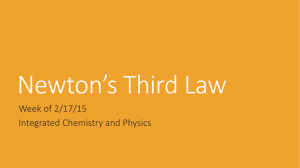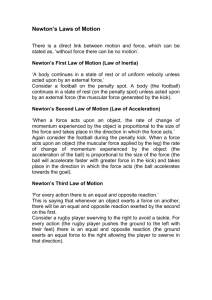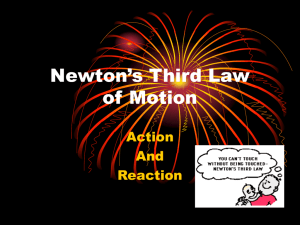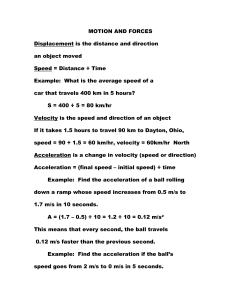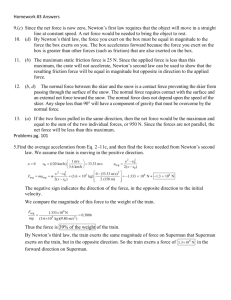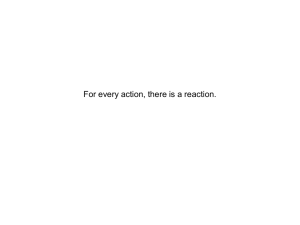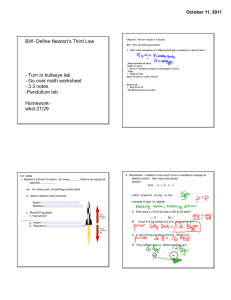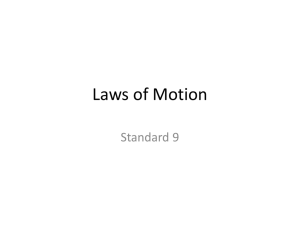Newton`s Third Law of Motion
advertisement
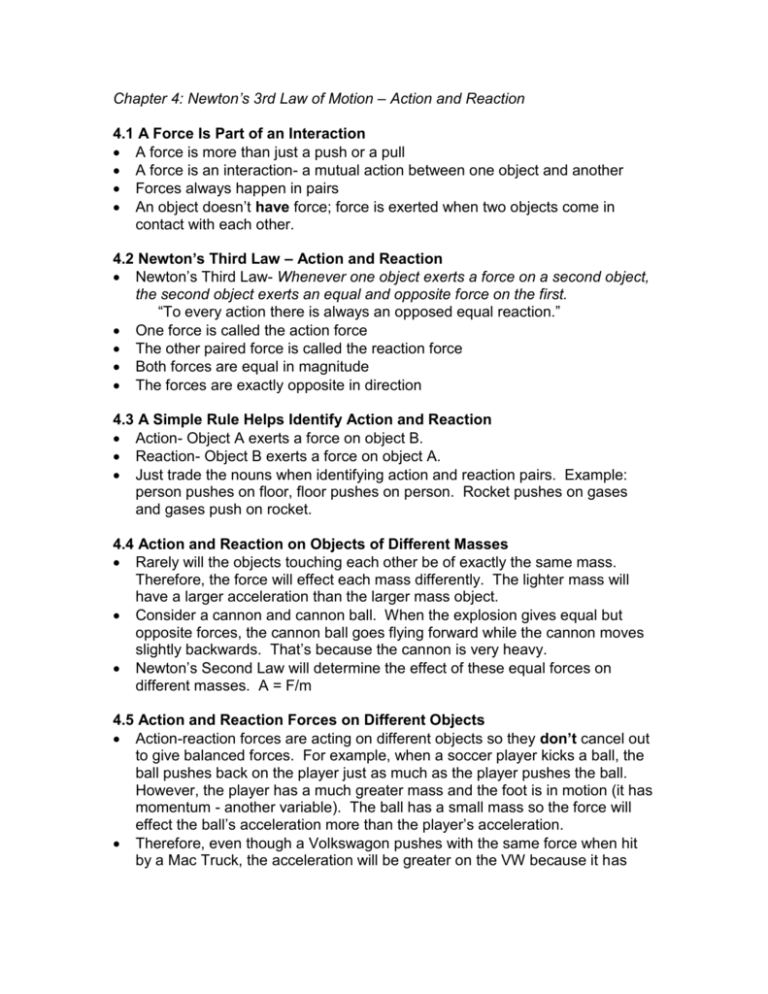
Chapter 4: Newton’s 3rd Law of Motion – Action and Reaction 4.1 A Force Is Part of an Interaction A force is more than just a push or a pull A force is an interaction- a mutual action between one object and another Forces always happen in pairs An object doesn’t have force; force is exerted when two objects come in contact with each other. 4.2 Newton’s Third Law – Action and Reaction Newton’s Third Law- Whenever one object exerts a force on a second object, the second object exerts an equal and opposite force on the first. “To every action there is always an opposed equal reaction.” One force is called the action force The other paired force is called the reaction force Both forces are equal in magnitude The forces are exactly opposite in direction 4.3 A Simple Rule Helps Identify Action and Reaction Action- Object A exerts a force on object B. Reaction- Object B exerts a force on object A. Just trade the nouns when identifying action and reaction pairs. Example: person pushes on floor, floor pushes on person. Rocket pushes on gases and gases push on rocket. 4.4 Action and Reaction on Objects of Different Masses Rarely will the objects touching each other be of exactly the same mass. Therefore, the force will effect each mass differently. The lighter mass will have a larger acceleration than the larger mass object. Consider a cannon and cannon ball. When the explosion gives equal but opposite forces, the cannon ball goes flying forward while the cannon moves slightly backwards. That’s because the cannon is very heavy. Newton’s Second Law will determine the effect of these equal forces on different masses. A = F/m 4.5 Action and Reaction Forces on Different Objects Action-reaction forces are acting on different objects so they don’t cancel out to give balanced forces. For example, when a soccer player kicks a ball, the ball pushes back on the player just as much as the player pushes the ball. However, the player has a much greater mass and the foot is in motion (it has momentum - another variable). The ball has a small mass so the force will effect the ball’s acceleration more than the player’s acceleration. Therefore, even though a Volkswagon pushes with the same force when hit by a Mac Truck, the acceleration will be greater on the VW because it has such a small mass in comparison to the truck. In other words, the little car is in trouble. 4.6 The Classic Horse-Cart Problem – A mind stumper Read page 61. Since the cart pulls on the horse just as much as the horse pulls on the cart, the only way the horse can actually get the cart to move is to push on the ground. 4.7 Action equals reaction Rope tension is the same at both ends no matter how hard one group is pulling. In order to win a tug of war, it’s not how hard you pull on the rope that determines the outcome. The important thing to remember is to push with your feet on the ground. A greater net force will lead to the win. 4.8 Summary of Newton’s Three Laws Inertia- the property of objects to resist change in motion Newton’s First Law of Motion – An object at rest tends to remain at rest; an object in motion tends to remain in motion at constant speed along a straightline path unless acted upon by an unbalanced force. Newton’s Second Law (law of acceleration) F=ma Terminal speed- falling at a constant speed Net force is zero (balanced forces) if an object is moving at constant velocity or is at rest Newton’s Third Law – Whenever one object exerts a force on a second object, the second object exerts an equal and opposite force on the first. Action and reaction always act on different objects. Neither force exists without the other.
